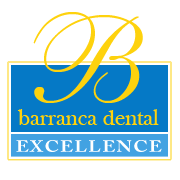[image_frame style=”framed_shadow” align=”right” alt=”A recent presentation suggests that people who receive professional teeth cleanings at least every two years had 24% less of a chance to have a heart attack and 13% less of a chance to have a stroke, compared to people who do not. Image Courtesy of imelenchon.morguefile | Irvine Dentist Neda Khodai, Barranca Dental – An Irvine Tradition of Dental Excellence” title=”A recent presentation suggests that people who receive professional teeth cleanings at least every two years had 24% less of a chance to have a heart attack and 13% less of a chance to have a stroke, compared to people who do not. Image Courtesy of imelenchon.morguefile | Irvine Dentist Neda Khodai, Barranca Dental – An Irvine Tradition of Dental Excellence” width=”220″ height=”150″]https://www.barrancadental.com/wp-content/uploads/2012/03/photodune-1538512-panoramic-dental-xray-xs.jpg[/image_frame]
Dental X-rays give Dr. Khodai valuable information about your oral health. Radiographs (the technical word for an X-ray image) provide insights about what is happening under the surface of your gums and teeth. While X-rays have always been safe, newer advancements have made them better than ever. Digital X-ray technology means no more bulky film in your mouth, less radiation than before, and better images. While most dentists have switched to digital X-rays, Dr. Khodai has been on the forefront of digital X-rays and is dedicated to providing you with the best dental care.
How Does An X-ray Work?
An X-ray is a type of radiation, just like light or the radio. They move so quickly that they can pass through your skin, but are mostly absorbed by your teeth and other bones in your mouth. Teeth and bones are known as hard tissue, which is denser than soft tissues such as your cheeks or gums. The X-rays will hit the digital sensor (or a piece of film) in your mouth, and create an image (radiograph). These images let your dentist see things hidden to the naked eye, such as tooth decay, infections, or gum disease, and even any changes to the bones and ligaments which keep your teeth in place.
Are X-rays Dangerous?
Yes and no. While radiation can be harmful in very large quantities, the amount you are exposed to from dental X-rays is tiny compared to your every day exposure to natural radiation sources in the environment (and from space!). Scientists measure radiation in what is known as a millisievert (mSv). The most common dental X-ray, the bitewing radiograph, exposes you to 0.038 mSv, and a full-blown dental X-ray examination is only 0.150 mSv. That’s on the old film X-rays though, newer digital X-rays, such as what Dr. Khodai uses, only expose you to 0.0038 mSv for a bitewing radiograph. Compare that to how much radiation you are exposed to from space every year: 0.510 mSv, and how much from nature: 3.000 mSv! Dental X-rays are nothing to worry about at all.
If you’re pregnant, some special precautions are taken to minimize radiation exposure, such as an additional leaded apron on your abdomen, and sometimes a leaded thyroid collar. X-rays do not need to be delayed if you are pregnant however, and are even encouraged. An untreated infection in your mouth poses a serious health risk to your baby, and may not be spotted during a regular examination without X-rays.
What’s the Benefit of Dental X-rays?
Many dental problems start beneath the surface of your teeth, and while your dentist is highly trained to see the signs of these problems, they need X-rays to be sure. An X-ray examination will help your dentist spot problems such as:
[fancy_list style=”arrow_list” variation=”blue”]
- Gum (periodontal) Disease
- Cysts or Abscesses
- Bone Infections
- Tumors or Cancer
- Developmental Problems
[/fancy_list]
X-rays help your dentist find and treat dental issues before they become big problems, saving you money and potential discomfort.
How Often Do I Need X-rays?
There are a lot of factors, such as your oral health, age, and gender which determine how often you need X-rays. For example, a juvenile might require more frequent X-rays due to their teeth and bones still developing, as well as generally lower oral hygiene in their age group. Regardless, it is up to your dentist to determine just how frequently you require a radiograph, and the best way to ensure you are receiving the care you need is to ensure you receive cleanings every 6 months.
If you are a new patient to Barranca Dental, Dr. Khodai may recommend a full X-ray examination. This is to ensure that she has the best information about your current dental health. If you received a recent X-ray examination, be sure to ask if copies can be forwarded to Barranca Dental to save on time and radiation exposure.
Contact Us!
If you have questions about X-rays or just need a regularly scheduled cleaning, it’s time to start thinking about your dental health and set up an appointment with Irvine Dentist Dr. Neda Khodai. Call us at 949-553-1111 or click below to get in touch with Barranca Dental Excellence in Orange County California. Se Habla Español!
[button size=”medium” link=”https://www.barrancadental.com/schedule-an-appointment-online/”]Schedule an Appointment Online[/button]
